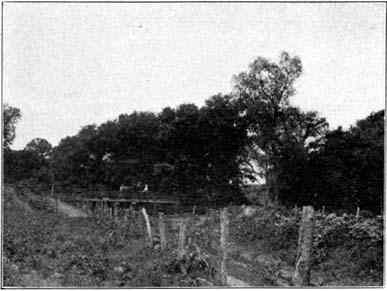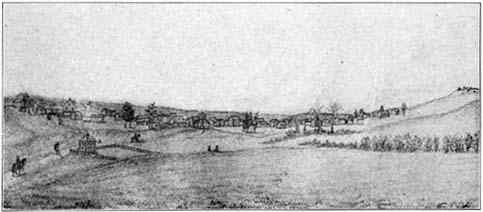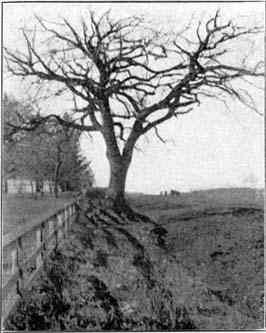quarters in a bend of the river a few miles
above Scott's Bluff. They were the first known white
explorers of northwestern Nebraska. March 8, 1813, they
broke camp and followed the Platte to the Otoe village
near Ashland where they traded an old horse they had
brought across the mountains for a canoe and went down
the Missouri. Their story is told in Washington Irving's
Astoria and is filled with startling adventures.
The founding of
Bellevue and its contemporary stations mark the first
period in Nebraska's permanent settlement--the
fur-trading period. The second period--the military and
steam engine period--begins in 1819. The fur traders
continue, but are no longer the controlling force. The
army and a little later the United States Indian agent
come in as the ruling powers. The first steamboat to
navigate Nebraska waters--the 'Western Engineer--arrived
at Fort Lisa September 19, 1819. She was a steamer built
at Pittsburg Pennsylvania, expressly for the use of the
United States government, was a stern wheeler,
seventy-five feet long, thirteen feet beam and drew 19
inches of water. The boat carried Major Stephen H. Long
with a party of engineers, scientists and soldiers
designed to explore the region between the Missouri and
the Rocky mountains. The expedition built log houses
under the shelter of the bluff about half a mile above
Fort Lisa and made winter quarters there. During the
winter councils were held with the Otoe, Omaha, Pawnee
and Sioux Indians who came there. June 6, 1820, the
party, numbering twenty-three men, left the Missouri and
proceeded up the north bank of the Platte, halting at the
Grand Pawnee village on the Loup. The Wood river valley
was followed for some miles. June 22 they reached the
forks of the Platte, crossed the North Platte and on the
23d the South Platte, which they ascended to the
mountains. The party returned by way of the Arkansas.
This expedition discovered and named some hundreds of
plants, animals and fossils. The name of Thomas Say,
botanist and zoologist, is forever linked in scientific
history with these discoveries, many of which he had the
honor of naming. The judgment of the expedition upon the
value of the country is summed up in one sentence which
asserts that the "plains on either side of the Platte
river have an elevation of fifty to one hundred feet and
present the aspect of hopeless and irreclaimable
sterility."
Ten days after the
arrival of the Western Engineer at Fort Lisa with Major
Long's party came Colonel Henry Atkinson with the Sixth
regiment United States infantry in keel boats. This force
was ordered to Council






